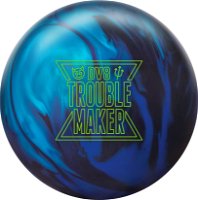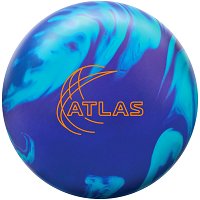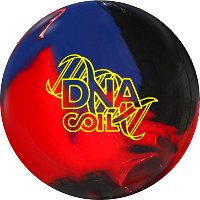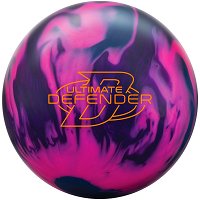Coupon excludes instant bonus items, hot deal items, and gift certificates.
Bowling Lingo / Terminology
Bowling Lingo / Terminology
ABC
The American Bowling Congress was founded in 1895 and was dissolved in 2004. It was replaced officially on January 1, 2005 by the United States Bowling Congress as an organization to combine the efforts of the ABC, WIBC, YABA, and USA Bowling.
ACTION
Pins flying and mixing, ending with a good make able leave or striking.
ADDRESS
The bowler's stance before beginning the approach.
ADJUSTMENT
The changing of part of your game to be more competitive on the particular lane and/or lane condition you are bowling. This can mean an alignment change, equipment change, or even changes in your physical or mental game; some are subtle, others more pronounced.
ANCHOR
Bottom position in team play.
APPROACH
The space extending back from the foul line used to make the steps and delivery. How the bowler gets to the foul line.
AREA
A player has "area" if they are able to hit a larger number of boards and still get the ball back to the pocket. Modern high scoring environments can often give a player a 5+ board area.
ARM SWING
The path your arm takes from your push away to release. Generally it is desirable to have your arm swing in a consistent plane of movement.
ARROWS
The triangles embedded on the lane used in aiming the throw (7 of them).
AXIS
Generally the reference is to the positive axis point (PAP), which is the point on the ball where the bowler's release creates the initial axis of rotation.
AXIS TILT
Ranging from 0 to 90 degrees, this is determined by the direction your axis is facing when you release the ball. 0 is parallel to the gutters, 90 is parallel to the foul line. The less axis tilt you have, the sooner the ball will go into a roll. Higher degrees of axis tilt promotes skid.
BABY SPLIT
The 2-7 or 3-10 split. Easier to pick up compared to a regular split.
BACK ENDS
Usually refers to the far end portion of the lane where the most hook can occur. If the back ends are very dry, the ball will continue to hook with power for most players; if the back ends are tight, most players will see more deflection in the pocket and fewer strikes.
BACKUP BALL
A ball that curves left to right for a right-handed bowler or right to left for a left-handed bowler. Professionals normally do not throw back up balls.
BAD RACK
A full set of pins that appears to have one or more not properly positioned; generally undesirable. See Re-rack
BAGGER (SUCH AS FIVE BAGGER)
A string of strikes; i.e., five bagger is five in a row.
BAKER GAME/SYSTEM
A method of team play in which in all five players bowl together to make one game; player #1 bowls frames 1 and 6; player #2 bowls frames 2 and 7; player #3 bowls frames 3 and 8; player #4 bowls frames 4 and 9; player #5 bowls frames 5 and 10. Used a lot in College Bowling.
BALANCE (AS APPLIED TO A BALL)
The weight of a bowling ball is not always evenly distributed in the sphere. USBC rules allow a ball to vary 3 ounces from the drilled top half to bottom half of a ball, and one ounce from the left to right side. Before resin balls, these weights were used to subtly change the roll pattern of a ball. A ball that has negative balances tends to be influenced to turn away from the pins; a ball with positive balance will be influenced to turn into the pins.
BALANCE (AS APPLIED TO A PLAYER)
A player is in balance if, at the point of release, they are able to complete their follow through without falling off to one side; generally means that the release and slide are simultaneous.
BALANCE HOLE
As a general rule, and not always the case. Anytime you have a drilling with the CG roughly an Inch or more off the center of grip, A Balance Hole is required. This helps get the ball back under the static weight rules set by USBC Standards.
BALL RETURN
The physical part of the equipment upon which the ball sits after being sent back to you after a delivery.
BALL SPINNER
A machine that is used to spin a ball in a container so that the user can apply ball polish or sand the ball or resurface
BALL TRACK
The area of the lane where most balls are thrown; the area on a ball where the ball rolls; most balls will show scratches and wear in this area after several games.
BEAK
The nose; the center of the headpin.
BED POSTS
The 7-10 split.
BELLY THE BALL
Describes the type of shot where a player stands inside and tosses it to the outside in the hopes it returns to the pocket for a strike.
BIG FOUR
The 4-6-7-10 split.
BLIND MESSENGER
When a pin comes rolling across the deck and misses, leaving a single pin.
BLIND SCORE
When a league bowler is "blind" and can't find his/her way to the league that evening, the bowler's average is simply used (as if he/she just bowled that score) when figuring the team's total for each game.
BLOW
A miss or an error failing to covert a spare other than a split.
BOWLOUT
The practice of allowing a team player to complete their game by bowling more than their scheduled turn at one time; allowed as a courtesy to a player that has other time commitments; league and tournament rules can prohibit the practice.
BOARD
A lane consists of 39 strips, each called boards; they are usually numbered by the player and used as targeting terms; i.e., I was throwing the 5th board (1st Arrow).
BODY ENGLISH
Movements and contortions of the body intended to steer the ball as it travels down the lane.
BOLICHE
A way to say Bowling in Portuguese.
BOLOS
A way to say Bowling in Spanish.
BOOMER
A big hooking ball; a person that throws a big hooking ball.
BOTTOM WEIGHT
The weight of a bowling ball is not always evenly distributed in the sphere. USBC rules allow a ball to vary 3 ounces from the drilled top half to bottom half of a ball, and one ounce from the left to right side. Before resin balls, these weights were used to subtly change the roll pattern of a ball. A ball that had higher top weight would tend to go longer before hooking; a ball with bottom weight would tend to roll earlier. Although still used in ball drilling layouts, it is less important with the modern ball.
BOULINGAS
A way to say Bowling in Lithuanian.
BREAK POINT
The portion on the lane where the thrown ball begins to hook back to the pocket. Finding the proper break point (called "break point management") is critical to the modern game. A ball that hooks too early or one that hooks too late will make it very difficult for a player to be consistent. Breakpoints can be adjusted by making changes in alignment, target, ball, ball surface and ball speed.
BROOKLYN
Refers to a ball that crosses over to the other side of the headpin opposite the side it was thrown (i.e. a Brooklyn strike hit the 1-2 pocket for a right-hander).
BUCKET
A diamond-shaped, four-pin cluster, e.g., the 2-4-5-8 or 1-2-3-5. Some claim it to be the 2-4-5-8 for right handers, the 3-5-6-9 for a lefty.
BURN
A part of the lane that has been played a lot to where the oil is gone, Playing the Burn.
CARRY DOWN
The oil conditioner on the lane does not soak into the boards, it sits on top. As balls are thrown, the oil is subtly moved...it may be pushed left and right, or, it may be moved farther down the lane (carried down). Usually, but not always, a house with a lot of carry down will not allow a ball to hook as much on the back ends and scores will be lower. In some houses and oil patterns, the initial pattern is too much over/under and carry increases as the carry down effect takes place. Carry down is invisible to bowlers and cannot be seen. A top professional can anticipate carry down and make adjustments accordingly.
CENTER OF GRAVITY (CG)
The heaviest part of a bowling ball. The “CG” is signified by a dye mark placed on the ball by the manufacturer designating the center of the weight mass relative to the top of the ball.
CHANNEL (ALSO GUTTER)
Semicircular grooves or drop-off area on each side of the bowling surface.
CHOP
To knock down one pin of a spare leave, while the pin next to or behind it remains standing.
CLEAN GAME
A game without any open frames.
CLOSED POCKET
A full rack of pins set up for your strike ball such that the head pin is a tad off spot towards your ball hand; i.e., to the right for a right handed player; closed pockets can give unpredictable results, often negative.
CONDITIONER
Another name for lane oil. All lanes need some type of protective coating to prevent burn marks in the heads from the force of the thrown balls. In the "old days" lane conditioner was used primarily as a protective measure; today, under the System of Bowling, some centers legally use the lane conditioner as a tool to assist in scoring and guiding a ball to the pocket. The area of a lane that is heavily conditioned will retard the hook, and if there is heavy conditioner in the center/pocket area of the lane it can assist the ball into the pocket.
CONVENTIONAL GRIP
A type of ball drilling where the fingers are placed up to the second joint. Not used by many higher skilled players as it is much harder to get a hook on this type of drilling, although, it may assist accuracy in some players.
COUNT
Usually the number of pins knocked down in the next frame that apply to a spare or strike.
COVERSTOCK
The material that makes up the outer shell of the ball; the hardness, texture, and shine of a bowling ball. It is generally defined as “Aggressive”, meaning it is made of a high friction material that is prone to large hook or flip when it encounters dry boards; or, “Medium” which displays less tendency to hook; and, “Mild/Mellow” which is the lowest friction material and the least sensitive to dry lanes.
DEUCE
A game of 200 or more.
DOTS
Series of seven spots on the lanes past the foul line but before the arrows; used to assist in targeting and alignment; also, the same spots on the approach normally used to align your feet in your initial stance. Markers on the runway that guide the bowler's approach.
DOUBLE WOOD
Any two pins such that one is directly behind the other the 2-8, 3-9, 1-5.
DOWN AND IN
Refers to a line that is more direct and parallel to the boards. Usually straight up the track, or outside of the track.
DRESSING
The lane conditioner; the act of applying lane conditioner.
DRIFT
The number of boards that you vary from straight in your approach to the foul line. For example, if you place the inside edge of your slide foot on board 15 on the approach, but your inside edge slides on the 12 board at the foul line, you have a three board inward drift.
DUTCH 200
A game of exactly 200 made by alternating strikes and spares throughout the entire game.
EARLY TIMING
Releasing the ball before the sliding foot completes its slide; usually results in less hook and a weaker ball as the player does not have the proper balance and leverage to hit up on the ball.
ENTRY ANGLE
The angle relative to the pocket that the ball enters the pocket. As a rule, increased angle means increased strikes (hence the preference for a ball that hooks a lot, or for clean back ends.)
FACE
Another way of say going through the nose, hitting the head pin straight on.
FALL BACK SHOT
A type of shot that starts to the opposite side of the normal pocket and then fades back into the pocket; sometimes used on very oily lane conditions.
FAST EIGHT
Describes an apparent good pocket hit that gets just eight (8) pins; typically the right-handed players will leave the 4-7 spare and the left-handed players the 6-10; usually the ball is a tad high when this happens.
FILL BALL
The ball thrown after a spare in the 10th frame.
FINGER GRIPS
Inserts that are placed in the finger and/or thumb holes to allow a better grip and generation of more spin, later release and more lift.
FINGER WEIGHT
The drilling of a ball so that the finger holes are closer to the ball's label than is the thumbhole; it is a form of positive weight.
FINGERTIP
A type of grip in which the fingers are inserted only as far as the first joint, allowing much more spin.
FIRST ARROW
The farthest to the right (for a right handed player); located on the 5th board.
FLARE (TRACK FLARE)
The migration of the ball track from the bowler's initial axis- the axis upon release-to the final axis-the axis at the moment of impact with the pins.
FLAT
A ball that deflects too much; ineffective ball; if a ball comes into the pocket on an apparent good hit but leaves a weak hit such as the 5-7 or 8-10 split or the pin a laying in the gutter next to the corner pin 10 or 7, it is said to have hit “flat.”
FLAT GUTTER
The normal gutter is shaped somewhat oval so that the ball can roll purely and cleanly to the pit area if it goes into the gutter early...the channel effect; however, at the end of the lanes by the pins, the gutters are flat, not ovaled. The height (from the pin deck to the bottom of the flat gutters) is regulated by the USBC as if the flat gutters are too high, they will allow much better pin-fall as pins will deflect off the sideboards and bounce back onto the lane much easier resulting in more pin action.
FLUSH
Being solid in the pocket.
FOLLOW THROUGH
What your arm does after the ball leaves your hand. It is generally desirable to follow through towards your target and upward as this promotes more accuracy.
FOUL
Crossing or touching the foul line at delivery. It's penalized by a count of zero pins. If the foul occurs on the first ball of a frame, the bowler gets a second shot at a new rack.
FOUL LINE
The line that separates the approach area from the beginning of the playing surface. A line, usually red or black, between the approach and the beginning of the lane, 60 feet from the head pin.
FOUNDATION FRAME
The 9th frame.
FRAME
A game of bowling is divided into 10 frames. In each frame there are two chances to knock down all the pins, except in the 10th frame.
FULL ROLLER
A ball that rolls over its full circumference. The track of the ball cuts between the thumb and finger holes. Although once very popular, it is now rarely used because it lacks the carrying power of a semi-rolled ball due to the fact that it generally cannot create the increased entry angles that are helpful to carrying your strikes, particularly the off-hits.
GREEK CHURCH
A split leave of five pins similar to the 4-6-7-9-10 so called because it reminds people of an old cathedral type church with spires, etc. Any split on which there are three pins on one side of the lane and two on the other.
HALF TEN
The description of a 10-pin that was left by a ball in the pocket and the 6-pin laying down in front of the 10-pin in a half hearted manner; same as "weak 10".
HAMBONE
When 4 strikes in a row are thrown.
HANDICAP
An adjustment in scores in order to equalize competition by adding pins on a predetermined basis.
HEADS
That part of the first portion of the lane that is usually hard maple (wood lanes) to absorb the impact of the thrown balls, generally the first 20 feet of the wood lane.
HEAD PIN
The #1 pin.
HIGH
A ball that hits more to the center of the head pin, often leaving a split.
HIGH HIT
A solid hit on a pin due to contact near its front center hitting too much head pin on a strike attempt.
HOUSE
The bowling establishment or building.
HUNG
When everyone else gets a strike except one person causing them to be hung.
KEILU
A way to say Bowling in Icelandic.
KICKBACKS
The side boards around the pins that divide lanes, where pins frequently rebound or "kick" back onto the lane aiding in pin action.
KING PIN
The 5-pin. It is a key pin to produce a strike: a light pocket hit or deflected hit leaves this pin standing.
KREGLE
A way to say Bowling in Polish.
LEAGUE
Organized competition on a weekly basis for team play.
LEAVE
Pins left standing after the first ball has been rolled.
LIGHT HIT
A ball hitting the side of the pin deflecting it sideways.
LILY
The 5-7-10 split; also known as the "sour apple".
LOFT
The distance the ball travels between time of release and the time it hits the lane.
LONG OIL
Condition in which the lane conditioner is applied from the foul line farther than normal. There is no magic standard, but 35-40 feet or more of application was considered long oil. It can be a more difficult condition in that there will be less back end to generate pocket entry angle. Long Oil in today’s environment would be considered anything longer than 40 feet of oil. 35 is now considered short oil.
MAPLE
The hard wood used for the head portion of the lanes (foul line to arrows).
MASS BIAS
Mass bias in a bowling ball occurs when the weight block or portion of weight block is more dominant in one direction inside of a bowling ball.
MATCH PLAY
A type of competition in which two bowlers compete against one another, rather than against the field as a whole. Typically, the winner of a match advances to the next round for another match.
MESSENGER
The name given to the pin that rolls across the pin deck into a pin or pins to either get a strike or break up a split.
MINUS
In competitive play, the amount of pins (including bonus, if any) that a player is scoring under a 200 average. A player that shoots 1,474 for eight (8) games is "minus" 126.
NEGATIVE WEIGHT
Weight on a ball that tends to hold back the hook and/or to get the ball into a roll earlier; bottom weight, negative side weight and thumb weight are considered negative weights. These are considered static weights that can be drilled into a ball.
NO-TAP
A type of competition where nine (9) pins on the first ball is scored as a strike; in some instances there are 8-pin no-tap events; in those, eights (8) pins or more on the first ball counts as a strike.
OPEN FRAME
A frame having neither a spare or strike.
OPEN BOWLING
Bowling for the fun of it, as opposed to competing in league or tournament play.
OUT OF BOUNDS
An area from which the ball can't get to the pocket with its usual break. If, for example, a right-handed bowler delivers the ball from too far to the right, and hangs outside not hittin the head pin, called Out Of Bounds.
OVER
In most tournaments, the number of pins above 200. Thus a score of 259 is "59 over."
PAP (POSITIVE AXIS POINT)
The point on the ball that is equidistant from all points of the release ball track.
PAR
To a professional bowler and in most tournaments now a days, a 200 game.
PERFECT GAME
A game of all strikes--twelve strikes in a row--resulting in bowling's maximum score of 300.
PICKET FENCE
The 1-2-4-7 or 1-3-6-10 spares.
PIN DECK
Area on which the pins are set.
PIN PLACEMENT
Out or In. A drilling term that is relative to a bowler's track designed purposely for creating more ball dynamics. A Pin-in ball (when the pin is located within two inches of the Center of Gravity) is excellent choice for control and less hook; a Pin-out ball usually can be made to hook more and flip more dramatically than pin-in balls; they often give the driller more options.
PIT
The area of the lane behind the pin deck. The area at the end of the lane.
PITCH
Angle at which the holes in a ball are drilled.
PLUS
In competitive play, the amount of pins (including bonus, if any) that a player is scoring over a 200 average; a player that shoots 1,634 for eight (8) games is "plus" 34. See also "minus", "over" and "under".
POCKET
The desirable location for the ball to hit the pins to maximize strike potential. Generally the area between the 1-3 pins (right-hand player) or the 1-2 pins (left-hand player). This is the target for the first ball in a frame.
POSITIVE WEIGHT
Weight on a ball that tends to enhance the hook and/or to get the ball into a roll later down the lane; top weight, positive side weight and finger weight are considered positive weights. These are considered static weights that can be drilled into a ball.
PUNCH OUT
To finish with consecutive strikes, from any frame on.
PUSH
A word used after bowlers have released the ball asking for it to NOT hook at the break point.
PUSH-AWAY
The pushing out (forward) of the ball to begin the swing (coincides with first step of four-step approach.)
RADIUS OF GYRATION (RG)
Identifies how fast a ball begins to rotate once it leaves the bowler's hand.
RANGE FINDERS
Markers in the lane that help the bowler determine the target line. There are two sets of such markers: 10 dots located seven feet past the foul line and seven arrows arranged in a triangle beginning 16 feet beyond the foul line. There are also range finders at 35 and 40 feet down the lane per USBC rules.
READ
A word used after bowlers have released the ball asking for it to hook at the break point.
RE-RACK
Resetting the pins to a new full rack due to a perceived mis-spotting of one or more pins.
REVS/REVOLUTIONS
The number of times the ball rolls over its circumference from when it is released until it contacts the pins, more is better.
ROLL OUT
A ball that loses its side rotation before hitting the pins; the hook action stops at that point and the ball straightens out.
SANDBAGGING
Deliberately keeping an average low so that person can receive a bigger handicap.
SCRATCH
The actual score the bowler makes; it is without any handicap adjustment (to equalize competition).
SIX PACK
Six strikes in a row.
SKID
What the ball does when it first hits the lane surface, all balls need to skid before hooking.
SLEEPER
A rear pin that is not easily seen because of a pin directly in front of it 2-8, 3-9, 1-5. See Double Wood
SOUR APPLE
A weak hit that leaves leaves the 5-7, 5-10 or 5-7-10 split; also, the 5-7-10 split itself. Also known as the "lily".
SPAN
On a bowling ball, the distance between the thumb and finger holes
SPARE
To knock down the remaining pins standing left after the first throw with the second throw.
SPLIT
Various combination of pins standing after a first throw where one or more pins has been knocked down creating a space between standing pins and thus a harder spare. Examples: 4-5, 5-6, 4-10, 6-7, 7-10, 4-6-7-10.
SPOT BOWLING
A method of aiming the ball in which spots (arrows and dots) on the lane are used as targets rather than looking at the pins during the throw.
STRIKE
Knocking down all 10 pins with the first effort.
STRING
When you have consecutive strikes.
SWERVE
Another way of saying Hook.
TAP
An apparent perfect hit for a strike but one pin is left standing.
TEAM GAME
Usually 3-5 people on a team each throwing an individual game.
TURKEY
Three consecutive strikes.
THREE HUNDRED (300) GAME
A perfect game. 12 strikes in a row.
TOP WEIGHT
Drilling of a ball so that there is more weight above the label than there is below; it is considered a positive weight.
VACANCY
A preset score used when a team does not have the same number on the team roster as do other teams. The vacancy score is set by the league and carries a handicap the same as if some bowler was carrying that average.
VENT HOLE
An extra hole drilled to relieve suction in the thumb hole; not a gripping hole.
WASHOUT
Gets confused often as a split but a washout is NOT a split since the headpin is left with others. For example, the 1-2-4-10 or 1-2-10 for right-handed bowlers, or the 1-3-6-7 or 1-3-7 for left-handers is considered a “washout.”
WEIGHT BLOCK
The interior portion of a ball that adds extra weight to it to bring the overall gross weight higher. Knowledge of the location of the weight block is used to create balls with differing positive and negative weight distributions.
The following site was used for reference: https://www.pba.com/Resources/BowlingLingo/















